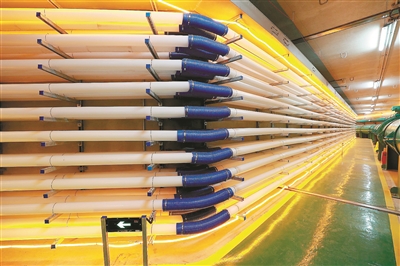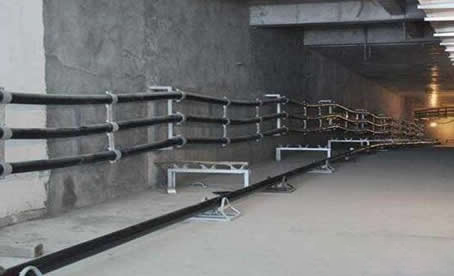Cables are generally divided into two types: power cables and control cables. The basic features are: generally buried in the ground, not easily affected by external damage and the environment, reliable operation, and no high voltage danger through residential areas. The cable line saves land, beautifies the city appearance, is easy to manage, and has a small amount of daily maintenance. However, there are also adverse effects of complex construction, high price, long construction period, difficult to change after laying, difficult to add branch lines, difficult to find faults, and complex maintenance technology.
Cable line laying technical requirements
1. Clarify the direction of the line and determine its direction according to the power distribution requirements and design drawings;
2. The burial depth should generally be at a depth of 0.7m underground, and should be buried at a depth of 1m underground when it is close to other cables or other pipes;
3. The trench bottom of the directly buried cable trench must be flat, or a layer of fine soil with a thickness of 100mm shall be laid at the bottom of the trench, and signs shall be installed on the ground;
4. When the cable crosses the road, it should be protected by a casing; 5 Both ends of the metal sheath of armored and lead-clad cables must be grounded.
There are many methods of laying cable lines, the commonly used are direct buried laying, cable trench laying, cable tunnel laying, pipe laying and indoor and outdoor laying. The following is a brief description of the construction method of cable direct buried laying.
Construction method of direct buried cable line laying
The first is to excavate the cable trench: buried cable laying is to dig a trench with a depth of about 0.8m on the ground and a trench width of 0.6m. After the ditch bottom is leveled, 100mm thick fine sand is laid as a cushion for the cable.
The laying of cables is generally divided into manual laying and mechanical traction. Manual laying is used for cables with smaller specifications. Two groups of personnel stand on both sides of the cable trench, carry the cable reel frame and move forward slowly along the laying direction, and gradually release the cable from the cable reel and fall into the trench. Mechanical traction is used for various specifications. For cables, at the bottom of the cable trench, place a pair of rollers every two meters; set up a pay-off frame at one end of the cable trench, and place a hoist or winch at the other end, and pull the cable out at a speed of 8~10 meters per minute and fall on the cable. On the rollers, then withdraw the rollers, and lay the cables loosely on the bottom of the groove for expansion and contraction. Then lay 100mm thick soft soil or fine sandy soil on the cable, cover it with concrete cover plate or clay brick, the covering width should exceed 50mm on both sides of the cable diameter, and finally fill the cable trench with soil, and the covering soil should be 150~ 200mm, and erect marked stakes at both ends, turns and intermediate joints of the cable line.
Then, after the intermediate joints and terminal heads are completed, the cable construction is completed, and relevant tests must be carried out before delivery.
Post time: May-31-2022


